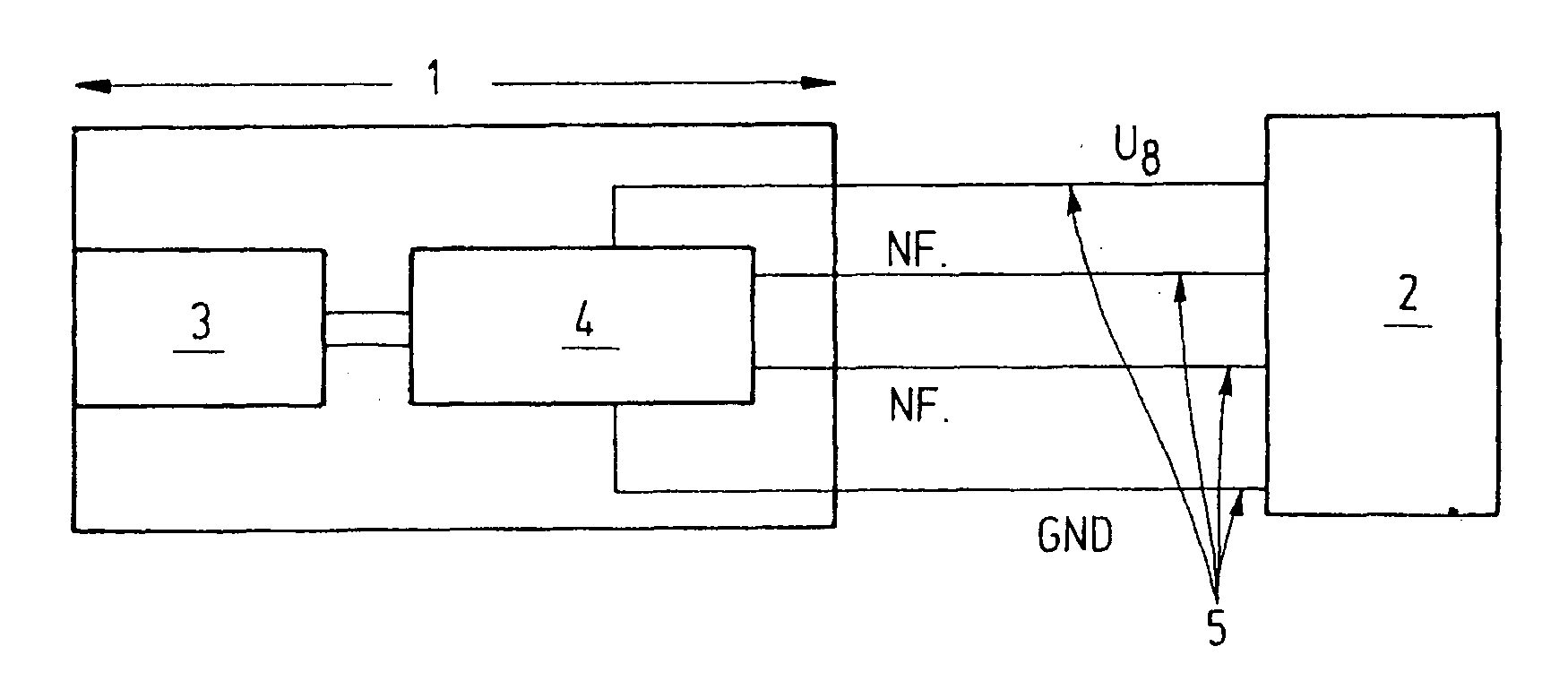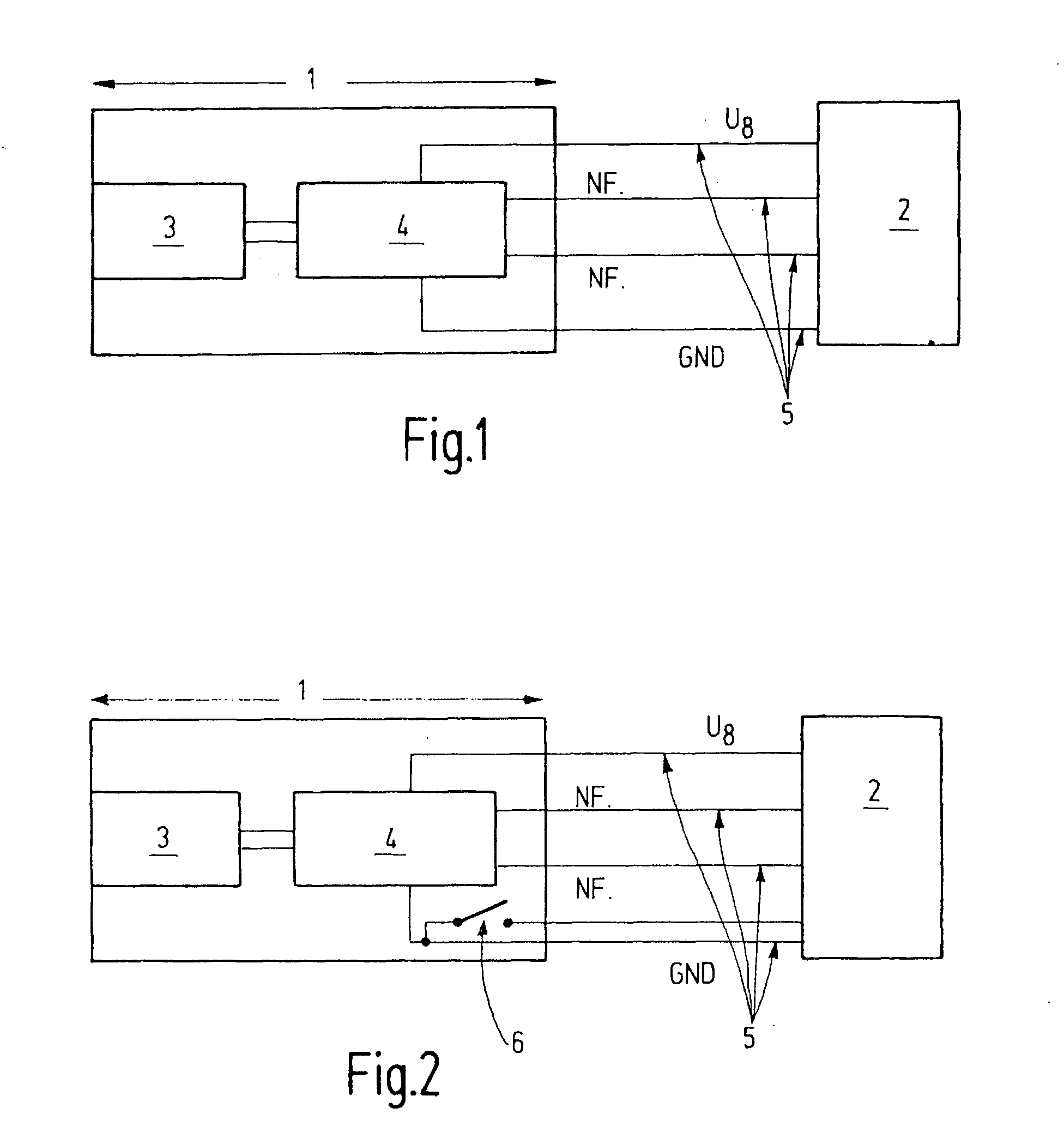Microphone Having an Output Signal Amplifier
a technology of output signal and amplifier, which is applied in the field of microphones, can solve the problems of poor signal-to-noise ratio, very weak output signal of condenser microphone, and very susceptible to interference of signal transmission from the microphone to an external microphone preamplifier, so as to reduce the susceptibility of interference of the microphone, improve the signal-to-noise ratio, and improve the effect of signal output level
- Summary
- Abstract
- Description
- Claims
- Application Information
AI Technical Summary
Benefits of technology
Problems solved by technology
Method used
Image
Examples
Embodiment Construction
[0019]In condenser microphones, the mechanical oscillations of the membrane is converted into electrical oscillations. The so-called low-frequency technique has proven successful for conversion. In the low-frequency circuit, the microphone capsule is charged via a resistor to a fixed DC voltage. This can be between 40 V and 200 V. When an acoustic wave strikes the membrane, the capacitance of the condenser changes in the same rhythm as the acoustic waves, as a function of the spacing of the condenser plates. This results in a charge equalization and thus in a corresponding AC voltage at the resistor. The voltage drop at the resistor is proportional to the magnitude of the change in capacitance and the magnitude of the applied DC voltage. For a condenser capacitance of 20 pF to 100 pF (depending on microphone type), the resistor must have a value between 80 MΩ and 400 MΩ. A long electrical lead cannot be connected to such a high-resistance source. When a signal source has, for exampl...
PUM
 Login to View More
Login to View More Abstract
Description
Claims
Application Information
 Login to View More
Login to View More - R&D
- Intellectual Property
- Life Sciences
- Materials
- Tech Scout
- Unparalleled Data Quality
- Higher Quality Content
- 60% Fewer Hallucinations
Browse by: Latest US Patents, China's latest patents, Technical Efficacy Thesaurus, Application Domain, Technology Topic, Popular Technical Reports.
© 2025 PatSnap. All rights reserved.Legal|Privacy policy|Modern Slavery Act Transparency Statement|Sitemap|About US| Contact US: help@patsnap.com


